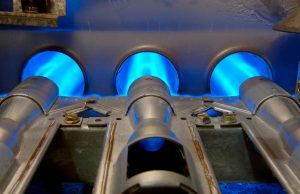 If there’s anything we can say with confidence about your heater here in the St. Augustine area, it’s that you want yours to operate as efficiently as possible, right? We may not need to run our heaters as often or as long as other parts of the country—but when we do run ours, we need it to operate well and not cost an arm and a leg.
If there’s anything we can say with confidence about your heater here in the St. Augustine area, it’s that you want yours to operate as efficiently as possible, right? We may not need to run our heaters as often or as long as other parts of the country—but when we do run ours, we need it to operate well and not cost an arm and a leg.
More important than that, however, is how safely your furnace operates, and yours may not be, if it has a cracked heat exchanger.
Furnaces are not dangerous appliances. They wouldn’t be so widely used and sold if they were. But if you are using a gas-powered heating system and not properly caring for it, it can become dangerous, especially as it ages. And the most common reason for this danger is a cracked heat exchanger in a furnace older than 10-15 years old. Read on to learn more!
What Does the Heat Exchanger Do?
This component is a vital part of your natural gas furnace—the area where the heat from the combustion gas moves to the air from the blower fan that moves into the ventilation system. This combustion gas cannot come into direct contact with the air, or else unhealthy fumes wind up entering your living space and the air you breathe.
Rather, combustion gas enters the heat exchanger—a metal clam-shaped chamber that makes the heating process possible. The heat from the combustion gas raises the temperature of the metal, and as the air from the blower passes around it, heat transfers to it. Essentially, the heat exchanger is where the furnace heats the air.
The Hazard of a Cracked Heat Exchanger
If you haven’t already gathered, a cracked heat exchanger will allow the exhaust fumes inside the exchanger into your indoor air. The most toxic of these fumes is known as carbon monoxide, or CO gas. In the best case scenario, CO makes people ill. In severe cases, it can be fatal.
The most likely cause for cracked heat exchangers is furnace corrosion. The chemical reaction between the combustion gas and metal over time can create a weakening of the metal. This is why it’s something to watch out for in an old furnace. Even the smallest crack is a problem, since it stretches wider as the heat exchanger turns hot and expands. This means it can get a little bit bigger each time you use your furnace.
But how can you spot a cracked heat exchanger?
After all, we don’t expect you to go searching inside of your furnace—in fact, we advise against this. Listen for a clicking noise from the furnace after the blower shuts off—this can be indicative of a cracked heat exchanger. Be sure to shut off your gas-powered appliances and call a pro for help right away if your CO detectors in your home go off too—if you don’t already have a CO detector but use gas appliances, please have these installed right away.
It’s important to be comfortable all year long, but it’s also important to be safe! Be sure to have your furnace maintained, and properly maintained each year.
For quality St. Augustine, FL HVAC service, contact Climate Masters today! Serving St. Johns County since 1988 with quality, hometown service.







